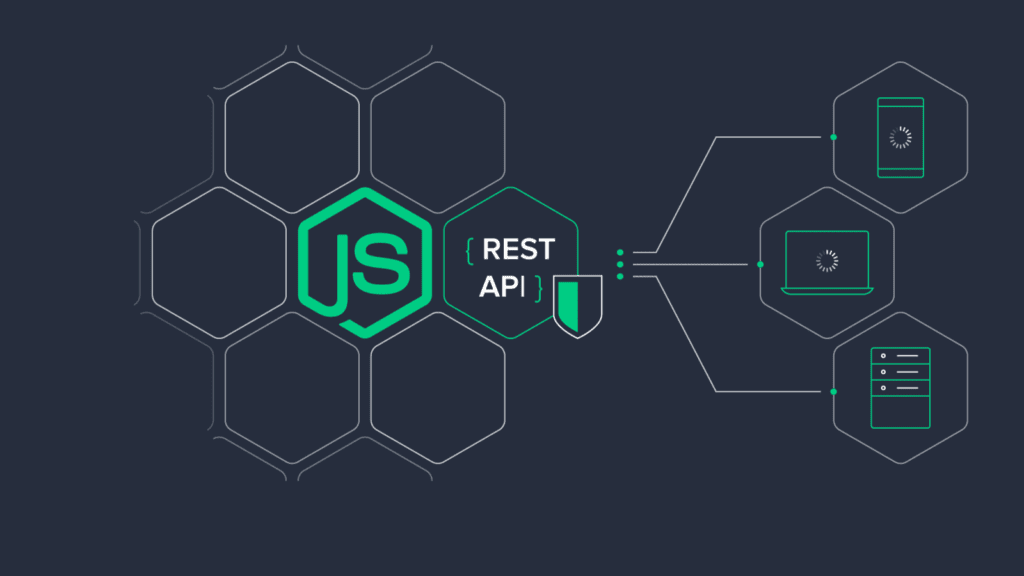
In the dynamic realm of web development, staying informed about the latest updates is paramount. Node.js, a powerhouse in server-side JavaScript, consistently evolves to meet the demands of modern development. This blog takes you on a journey through the recent Node.js updates, unraveling the secrets behind these innovations. As we delve into the intricacies, let’s also explore the vibrant world of React JS development, where Node.js and React join forces to shape cutting-edge web applications. As we delve into the intricacies, let’s also explore the dynamic world of React JS development, synergizing with Node.js to craft cutting-edge web applications.
Node.js at a Glance
Before delving into the recent updates, let’s take a moment to understand Node.js. As a runtime constructed on Chrome’s V8 JavaScript engine, Node.js facilitates the execution of JavaScript code on the server-side. Its non-blocking, event-driven architecture positions it as an expert in managing concurrent connections and ensuring the scalability of applications.
The Latest Node.js Innovations
1. V8 Engine Upgrade: Boosting Performance
At the heart of Node.js lies the V8 engine, responsible for executing JavaScript code. The latest updates bring a significant V8 engine upgrade, enhancing performance and optimizing resource utilization. This turbocharge translates into faster execution speeds, reduced memory consumption, and improved overall efficiency for Node.js applications.
2. ECMAScript Modules (ESM): Embracing Modern JavaScript
With the growing adoption of modern JavaScript, Node.js has introduced native support for ECMAScript Modules (ESM). This addition allows developers to leverage the latest features of JavaScript, promoting cleaner code structures and improved maintainability. The seamless integration of ESM in Node.js opens the door to a more modular and forward-looking codebase.
3. N-API Improvements: Enhancing Stability
Node.js interacts with native addons through the N-API (Node-API) layer, providing a stable and consistent interface. Recent updates include improvements to N-API, ensuring better compatibility and reducing the maintenance overhead for addon developers. This enhancement fortifies the foundation of Node.js, fostering a more robust ecosystem.
4. Worker Threads: Conquering Concurrency Challenges
In the pursuit of optimal concurrency, Node.js introduces Worker Threads. This feature allows developers to spawn lightweight threads, each with its own event loop, enabling parallel execution of tasks. With Worker Threads, Node.js becomes even more adept at handling concurrent operations, paving the way for enhanced performance in multi-core environments.
5. Diagnostic Report Updates: Simplifying Troubleshooting
Troubleshooting and debugging are integral aspects of development. Node.js addresses this with updates to its Diagnostic Report feature. This enhancement provides more comprehensive insights into issues such as memory leaks and unhandled exceptions, streamlining the debugging process and empowering developers to create more resilient applications.
Synergizing with React JS Development
As Node.js evolves, its synergy with React JS, a leading front-end library, becomes increasingly potent. React JS, developed and maintained by Facebook, excels in building interactive user interfaces. Let’s explore how the latest Node.js updates align with the principles of React JS development, creating a harmonious environment for crafting modern web applications.
1. Server-Side Rendering (SSR): Enhancing Performance
Node.js, with its non-blocking I/O operations, aligns seamlessly with React’s virtual DOM and component-based architecture. This synergy is particularly beneficial for Server-Side Rendering (SSR) in React applications. SSR improves performance by rendering initial page content on the server, presenting a fully formed page to users more rapidly. The recent Node.js updates, especially the V8 engine upgrade, contribute to the efficiency of SSR in React applications.
2. Scalability and Concurrency: Meeting Growing Demands
Both Node.js and React JS prioritize scalability and efficient concurrency handling. Node.js, with its event-driven architecture, complements React’s ability to create reusable and modular components. As applications scale, the latest Node.js enhancements, including Worker Threads, further bolster the concurrent processing capabilities of React applications. This synergy ensures a smooth and responsive user experience, even as application complexity grows.
3. Modern JavaScript Features: Improving Development Workflows
The native support for ECMAScript Modules (ESM) in Node.js aligns with React JS’s commitment to modern JavaScript features. This compatibility allows developers to embrace the latest language enhancements, fostering cleaner and more maintainable codebases. As React JS evolves with new features and syntax, Node.js ensures developers can seamlessly incorporate these advancements into their applications.
4. Diagnostic Capabilities: Facilitating Debugging in React Applications
Troubleshooting React applications is simplified with Node.js’s enhanced Diagnostic Report feature. React’s complex component hierarchies can sometimes pose challenges in identifying and resolving issues. The comprehensive diagnostic insights provided by Node.js empower developers to diagnose and address issues more effectively, enhancing the reliability of React applications.
In Conclusion
The latest Node.js updates bring forth a wave of innovations, from performance enhancements to improved diagnostics and concurrency handling. As Node.js continues to evolve, its compatibility with React JS creates a formidable environment for developing modern, scalable, and efficient web applications. Whether you’re a Node.js enthusiast, a React JS developer, or both, embracing these updates opens doors to a world of possibilities in web development. Stay tuned for the ongoing journey of Node.js and React JS, where innovation is the norm, and the future is continually shaped by cutting-edge technologies.
